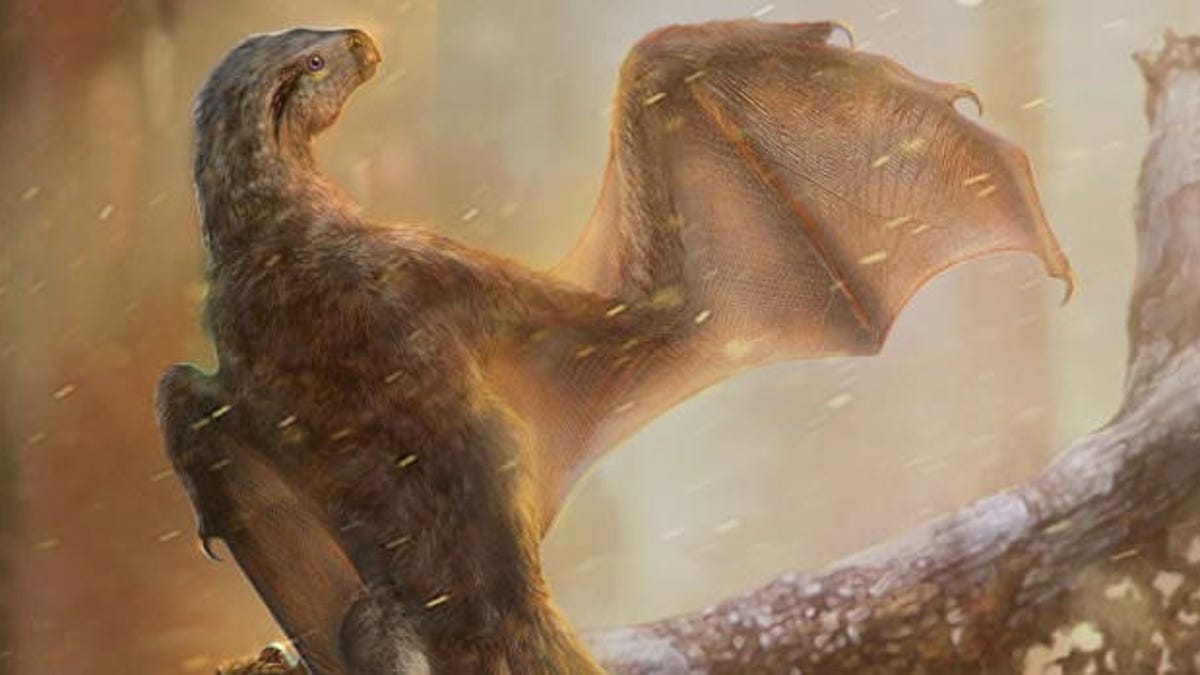Scientists just discovered a new dinosaur with leathery bat wings
Nah nah nah nah nah nah nah nah nah nah nah nah nah nah nah nah, bat-winged!

To the Batcave!
Holy leathery membranes, Batman! An exquisite, fascinating fossil find in northern China has provided new evidence that some Jurassic dinosaurs developed membranous wings like those seen in modern day bats.
A complete analysis of the find is published in the journal Nature on May 8, detailing the new fossil, which researchers have named Ambopteryx longibranchium. The nearly-complete fossil was spotted in 2017, lying in a rock formation dating back 163 million years. Remnants of the creature's plumage and tissues were well-preserved, allowing researchers to slowly piece together the history and form of the unusual dinosaur.
The researchers found soft tissue around the dinosaur's flanks and across its arms, showing it had folds of leathery skin that would have resembled wings. The fossil also contains a "styliform" -- a long bone that extends from the wrist -- providing further evidence the membrane likely ran from Ambopteryx's flank to its fingertips.
Measuring approximately 13 inches in length, Ambopteryx would have lived in the trees of the Jurassic period and used its wings to glide through the air, rather than for powered flight. It belongs to a group of dinosaurs known as the scansoriopterygids, which all contain lanky arms, but it's only the second fossil found in the group to contain the styliform bone.
That is significant, because it strengthens the case the first "bat-winged" fossil, located in 2015 from a location only 50 miles away, was indeed a flyer. Dubbed "Yi qi", the fossil was bizarre enough that it divided paleontologist opinion on whether or not the creature had wings. We know dinosaurs eventually evolved feathery wings and became today's birds, but besides Yi qi, there wasn't any prior evidence in the fossil record to suggest this type of non-avian flight.
That makes Ambopteryx a powerful find, lending weight to the idea Yi qi did indeed develop a separate method of flight, similar to that of the pterosaurs but different to the line of dinosaurs that would eventually become birds. The membrane may even be present in previously discovered members of the scansoriopterygids, though at present it is believed the other members had more bird-like wings.

